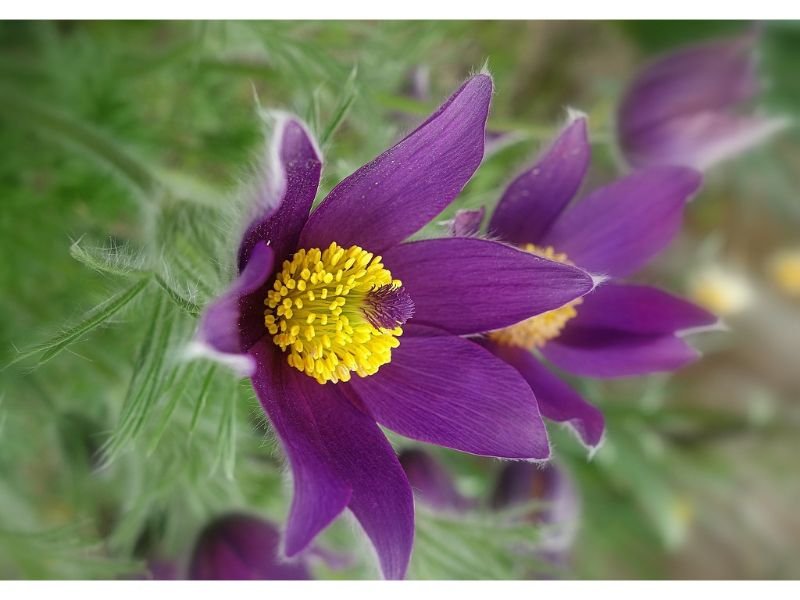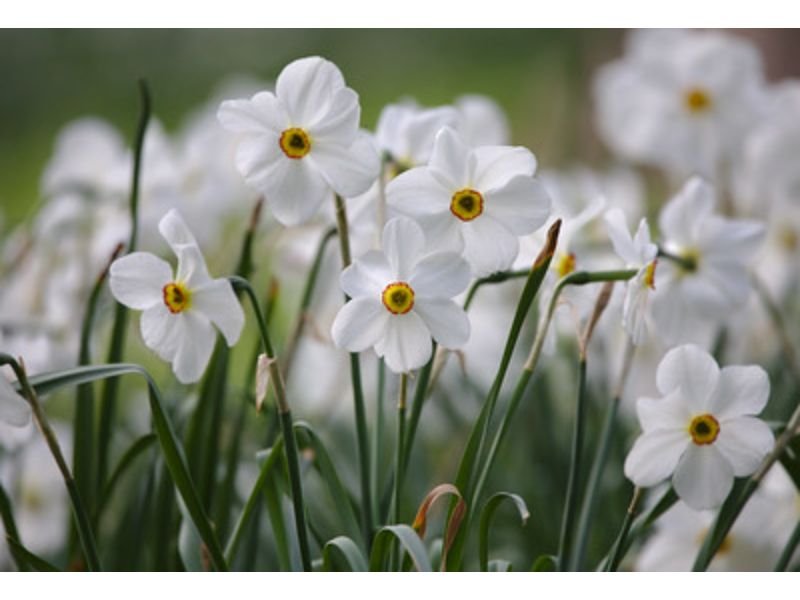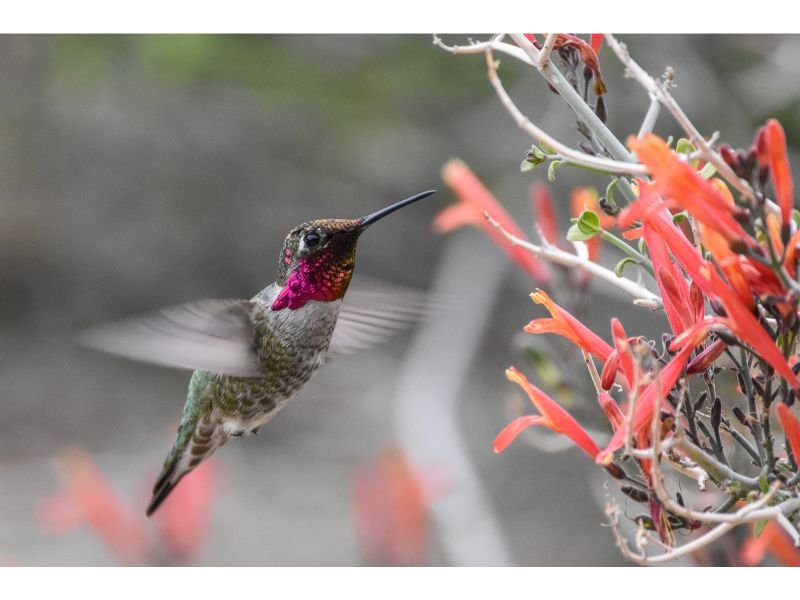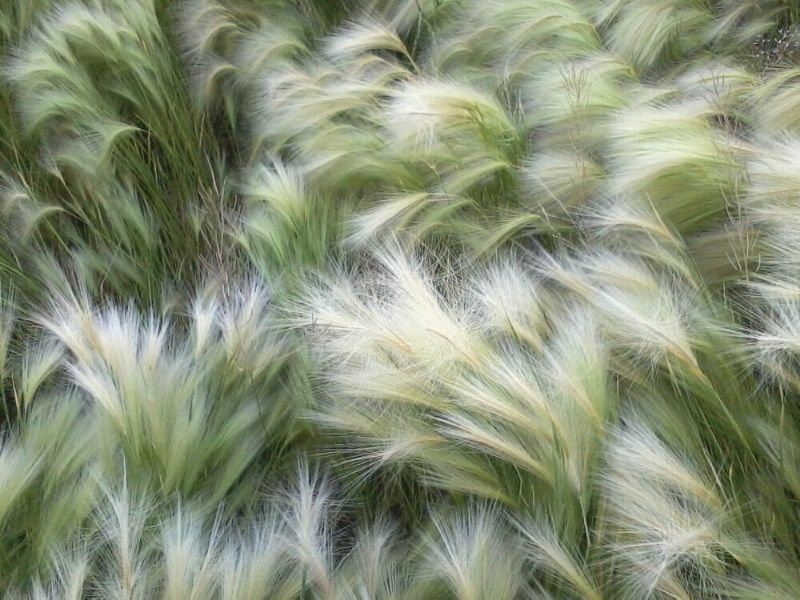Anemone pulsatilla, also known as the pasque flower, is one of nature’s rare gems with intriguing blooms. But just like any other flowering plant, anemone pulsatilla demands attention. From providing the right soil and light conditions to keeping the right way for watering and feeding, it can be quite tricky to keep this gorgeous wildflower under control. Let’s dive in and get ready to level up your gardening knowledge with this fuzzy flower!

Table of Contents
Anemone Pulsatilla General Facts
Common Name(s): Pasque flower, prairie crocus, meadow anemone, windflower
Scientific Name: Pulsatilla vulgaris
Family: Ranunculaceae
Plant Type: Herbaceous perennial
Country of Origin: Europe, Siberia, Mongolia
Natural Habitat: Meadows, grasslands, rocky slopes, alpine regions
Size: Growing and spreading to about 9 to 12 inches (22 to 30 centimeters)
Toxicity Level: High
Color(s): Purple, lavender, yellow, creamy white, bright pink, wine-red
What’s The Fuss About Anemone Pulsatilla?

Anemone pulsatilla vulgaris is not just about a charming look. They have several notable features, one of which is their unique hairy foliage which helps to protect their delicate body from cold and wind. The flowering plant also has cultural significance, with associations with Easter in some European traditions, and has been used in folklore as a symbol of rebirth, good luck, and protection.
Foliage and Blooms Appearance
Anemone pulsatilla features bell-shaped flowers with thin, 5 to 6 petals that range from lavender purple to creamy white. They have a yellow center made from a group of stamens or pistils. The leaves are whorled-shaped, medium to dark green, and soft when touched. The stems are thin and hairy, creating an illusion of silky stems, and usually emerge first when the plant blooms in spring.
Anemone Pulsatilla Medicinal Uses: Is This Plant Really Useful To Treat Illnesses?
Despite being highly toxic, anemone pulsatilla is part of traditional medicine and has been used to treat various ailments. Different parts of the plants, including roots, flowers, and leaves, have been used to treat conditions such as rheumatic, nervous headaches, dysmenorrhea, and coughs.
Pulsatilla Vulgaris Seeds: Can You Use Them For Propagation?
Yes! You can use the seeds of anemone pulsatilla vulgaris for propagation purposes. To start, wait until the seeds are turning dark brown and rattle inside when shaken. Next, prepare the soil, sow the seeds in the soil, and provide all the right growing conditions for the best result. The germination process would take several weeks, and once the flowering plant sprouted, move them into individual pots or gardening beds, and don’t forget to provide some space.
Size and Growth
Anemone pulsatilla is considered a compact-sized flowering plant with a slow growth rate. Growing and spreading to only about 12 inches (30 centimeters), it can take a few months for the plant to reach its mature size, but it’s worth the wait! Once established, they are relatively low-maintenance and don’t ask much in terms of growing conditions.
Does Anemone Pulsatilla Vulgaris Produce Any Fragrance?
Anemone pulsatilla is not known as a fragrant flower and is primarily popular for its attractive blooms and foliage.
How Toxic Is Anemone Pulsatilla?
As beautiful as it is, you need to remember that anemone pulsatilla is a highly toxic flowering plant. All parts of this plant contain toxic chemical compounds such as protoanemonin, which can cause symptoms such as inflammation, skin irritation, and nausea if eaten. It’s important to handle the flowering plant with gloves and avoid contact with the sap as well as ingesting any parts of the plant.
Can You Grow Anemone Pulsatilla Vulgaris As Indoor Houseplant?
Unfortunately, it would be challenging to grow anemone pulsatilla indoors. In fact, this plant is not popular and is not known as an indoor houseplant. They require specific growing conditions that are hard to replicate indoors and are more suitable for outdoor gardening where they can thrive naturally. We’ll discuss the growing requirements this gorgeous perennial needs in the next section below.
Anemone Pulsatilla Growing Conditions

Light
Anemone pulsatilla prefers full sun to partial shade to thrive, with a minimum of 4 to 6 hours of exposure to sunlight each day. In hot summer regions where the sun can be too intense, it’s more recommended to plant them in partial shade. However, it’s worth noting that too much shade can cause the flowering plant to become too leggy and produce fewer blooms.
Watering
When it comes to watering, anemone pulsatilla vulgaris requires a daily and weekly regime that is similar to their anemone counterparts. Water deeply about one to two times weekly, depending on your climate, about 2 inches (5 centimeters). Wait until the soil dries out a little bit between waterings.
Temperature and Humidity
Anemone pulsatilla and cooler temperatures are like two sides of a coin, they’re inseparable. Once belonging to the harsh, cold, and windy conditions in their natural habitat, this plant has evolved to thrive in cool to moderate temperatures and does not tolerate high heat and high humidity. Ideally, the temperature for anemone pulsatilla vulgaris should be set between 50°F to 70°F (10°C to 21°C), although they tolerate temperatures as low as -4°F (-20°C). They prefer low to medium humidity, as too high humidity and an overly damp environment can lead to root rot.
Soil
Anemone pulsatilla is a big fan of well-drained soil that is rich in high organic matter. They need the soil to be kept constantly wet and prefer sandy or loamy soil that is slightly alkaline to neutral. To improve drainage, you can add perlite or gravel to the soil mix. Organic matter such as compost and mulch can also be added to improve moisture retention.
Fertilizing
Unlike most flowering plants, anemone pulsatilla do not require heavy fertilization, thanks to their adaptability to low-nutrient soil in their natural habitat. Moreover, it’s best to avoid fertilization except during the spring, which can help to promote healthy growth. Use a balanced, slow-release, and water-soluble fertilizer in appropriate amounts, and keep an eye on the frequency of the application.
Repotting and Pruning
Similar to fertilizing, anemone pulsatilla typically does not need to be repotted, however, if you notice that the flowering plant has outgrown its container or the soil is compacted, repotting the plant is needed. Avoid disturbing the roots as much as possible as anemone pulsatilla is sensitive to root disturbance.
For pruning, the general rule remains the same as repotting. Anemone pulsatilla vulgaris do not require heavy pruning, but you can prune them to remove any spent flowers to encourage more growth. If the plant gets diseased, pruning might be needed as well to prevent further infection.
Do Anemone Pulsatilla Vulnerable To Pests and Diseases?
Another plus point to add is, aside from not needing much fertilizer, pruning, and repotting, anemone pulsatilla is also relatively resistant to pests and diseases. However, it’s still predominant to keep good hygiene, avoid under and overwatering, and provide air circulation. If you do notice any signs of pests or diseases, you can treat these problems with insecticidal soap or neem oil, or consult with a professional for a better course of action.
Bottom Line: So What Is Anemone Pulsatilla and What Do They Need To Thrive?
Anemone pulsatilla, also known as pasque flower, is a rare and toxic perennial flowering plant from the Ranunculaceae or buttercup family. Popular for vivid-colored, cup-shaped blooms and hairy stems, they require well-draining, humus-rich soil with full or partial shade to thrive. They do well under minimal watering and fertilization and also do not need much pruning and repotting. Despite their toxicity and scarcity, anemone pulsatilla surely has captured many hearts of plant enthusiasts.

New author in the hood. Loves gardening and flowers are my spirit animals (yes I know they are not animals but I insist). I will be covering most of the flowers’ topics here and occasionally random though as well.






